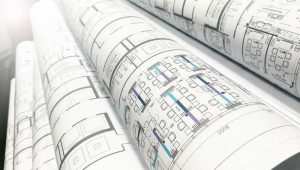Computer-aided design (CAD) technology has revolutionised various fields, and the construction industry is no exception. In scaffolding design and planning, CAD offers unparalleled precision, efficiency, and safety, making it an invaluable tool for modern construction projects.
This technology allows for the creation of detailed, accurate designs that are crucial for ensuring the stability and safety of scaffolding structures.
Precise design and meticulous planning are essential in scaffolding to avoid structural failures and ensure worker safety. Traditional methods, while effective, often fall short in terms of accuracy and efficiency.
CAD addresses these shortcomings by providing a digital platform where designs can be created, modified, and tested with a high degree of precision. This blog explores the myriad benefits of using CAD in scaffolding design and planning.
Enhanced Accuracy and Precision
One of the primary advantages of using CAD in scaffolding design is the enhanced accuracy it offers. Traditional design methods are prone to human error, which can lead to costly and dangerous mistakes.
CAD software significantly reduces these risks by allowing for precise measurements and detailed designs, ensuring that every scaffolding component fits perfectly.
Precise planning is another critical benefit of CAD. With the ability to create detailed blueprints, designers can plan scaffolding structures down to the smallest detail, ensuring that all elements are considered.
This precision improves the safety and stability of the scaffolding and enhances overall project efficiency by minimising the need for adjustments during construction.
Improved Visualisation and Simulation
CAD technology excels in providing advanced visualisation tools, such as 3D modelling, which allow designers to create and view complex scaffolding structures from multiple angles.
This capability is particularly useful for visualising how the scaffolding will interact with the existing site and identifying any potential issues before construction begins.
Simulation capabilities are another significant advantage of CAD. Designers can use these tools to test how their scaffolding designs will perform under various conditions, such as different loads and weather scenarios.
This pre-emptive testing helps identify potential weaknesses and ensures that the final design is robust and reliable, reducing the likelihood of on-site problems.
Increased Efficiency and Time-Saving
CAD significantly speeds up the design process compared to traditional manual methods. The ability to quickly create, modify, and replicate designs means that scaffolding plans can be developed and refined much faster.
This increased speed not only saves time but also allows for more iterations and improvements, leading to better final designs.
Efficient time management is another key benefit of using CAD. The streamlined design process reduces the time needed for planning and approvals, enabling projects to move from the planning stage to execution more swiftly.
This efficiency is crucial in the construction industry, where delays can lead to substantial financial losses and project setbacks.
Cost-Effectiveness
One of the most compelling benefits of CAD is its ability to optimise resources. Precise planning ensures that materials are used efficiently, reducing waste and cutting costs.
By accurately calculating the amount of scaffolding required and eliminating excess, projects can stay within budget and allocate resources more effectively.
Keeping projects within budget is another significant advantage of CAD. By anticipating and mitigating potential issues during the design phase, unexpected costs and delays can be minimised.
This proactive approach helps maintain financial control over projects and ensures that they are completed on time and within the allocated budget.
Better Collaboration and Communication
CAD facilitates better collaboration among project teams. With digital designs that can be easily shared and edited in real-time, team members can work together more effectively, regardless of their physical location.
This capability enhances communication and ensures that everyone involved in the project is on the same page.
Improved stakeholder communication is another benefit of using CAD. Detailed and visually accurate designs make it easier to convey ideas and plans to clients, contractors, and other stakeholders.
This clarity helps prevent misunderstandings and ensures that all parties have a clear understanding of the project scope and expectations.
Enhanced Safety
Safety is paramount in scaffolding design, and CAD plays a crucial role in enhancing it. The ability to conduct detailed simulations allows designers to identify and address potential hazards before construction begins.
This proactive approach ensures that scaffolding structures are safe and reliable, reducing the risk of accidents on-site.
Compliance with safety regulations and standards is another critical aspect of using CAD.
The detailed designs and simulations provided by CAD help ensure that all scaffolding structures meet the necessary safety requirements. This compliance not only protects workers but also helps avoid legal issues and potential fines.
Conclusion
The benefits of using CAD in scaffolding design and planning are extensive and impactful.
From enhanced accuracy and precision to improved visualisation, increased efficiency, cost-effectiveness, better collaboration, and enhanced safety, CAD technology offers a comprehensive solution for modern scaffolding projects.
Embracing CAD technology in scaffolding design and planning not only leads to better project outcomes but also sets a new standard for safety and efficiency in the construction industry.
By adopting CAD, construction professionals can ensure that their scaffolding designs are not only safe and reliable but also cost-effective and efficient.
This technology is a powerful tool that can significantly improve the overall quality and success of scaffolding projects.




